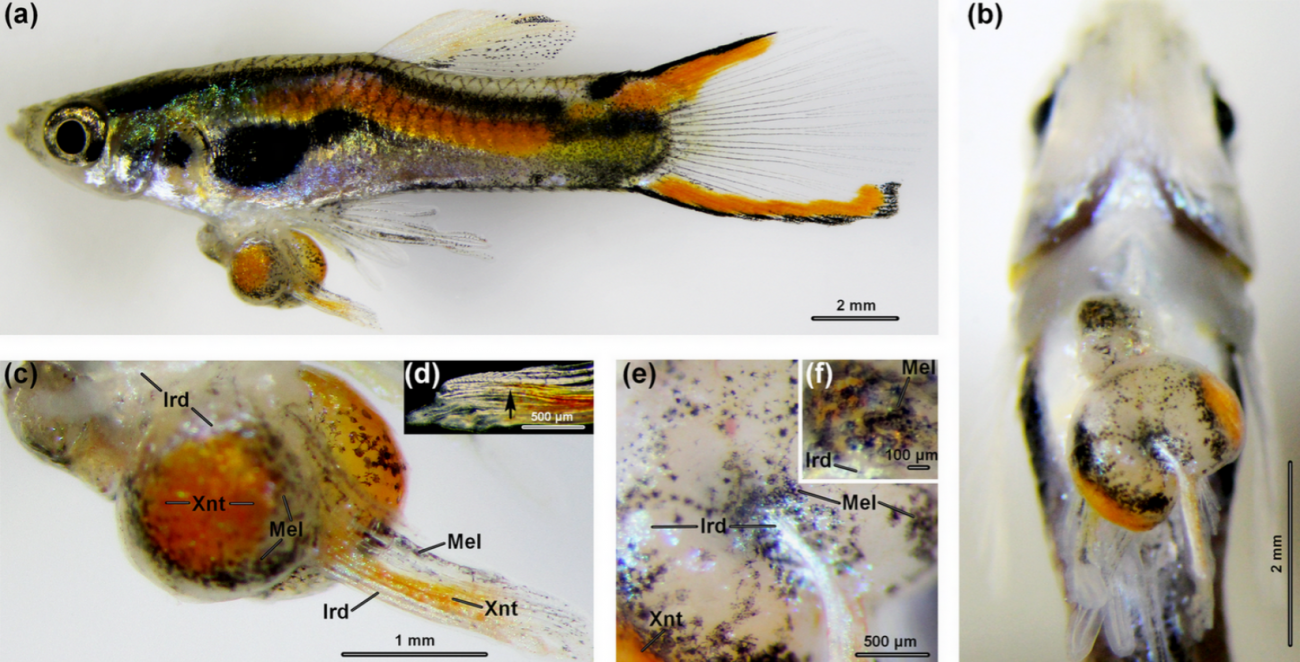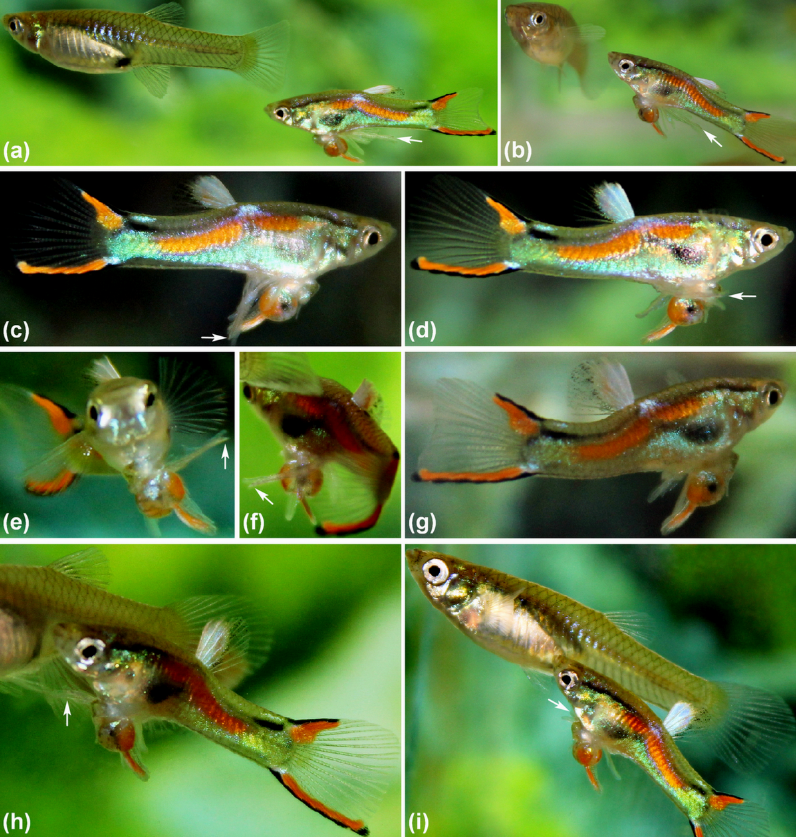
Fish have a wide variety of tumors that can arise from all types of cells. Fish tumors are generally less aggressive and metastasize less often than tumors in mammals. A separate interesting group is made up of tumors of embryonic origin, which include teratoma - a tumor consisting of immature or fully formed tissues arising from at least two germ layers. This tumor is found both in the gonads and extragonadal sites. Teratomas in fish are quite rare and remain poorly studied in many species.
A researcher from the Laboratory of Evolutionary Morphology Problems at the A. N. Severtsov Institute of Ecology and Evolution of the Russian Academy of Sciences, together with a colleague from St. Petersburg State University, managed to detect and study extragonadal teratomas in Endler's guppy (Poecilia wingei) (Fig. 1).

In all teratomas, the most common tissues were striated muscle and nervous tissue. In addition, derivatives of all three germ layers were found in the tumors, including structures resembling the developing hypophysis gland and gonopodium (copulatory organ) (Fig. 1 and Fig. 2). The structural features of the teratomas indicate a possible connection between these tumors and a disruption of conservative processes operating in the germ line of cells.

It is noteworthy that despite the relatively large teratoma, the male exhibited all types of mating behavior (Fig. 3) and retained the ability to reproduce.
The presence of structures of varying degrees of differentiation in teratomas and the possibility of inheritance contribute to further study of the histogenesis (morphology of tumor cells) and biological behavior (in relation to the host: benign or malignant) of teratomas in fish, including in the light of tumor evolution.
The work was published in the Journal of Fish Diseases (WoS Q1). . Prazdnikov D. V., Kondakova E. A. (2024). Investigation of extragonadal teratomas in two Poecilia wingei. Journal of Fish Diseases, 47(5), e13929.
